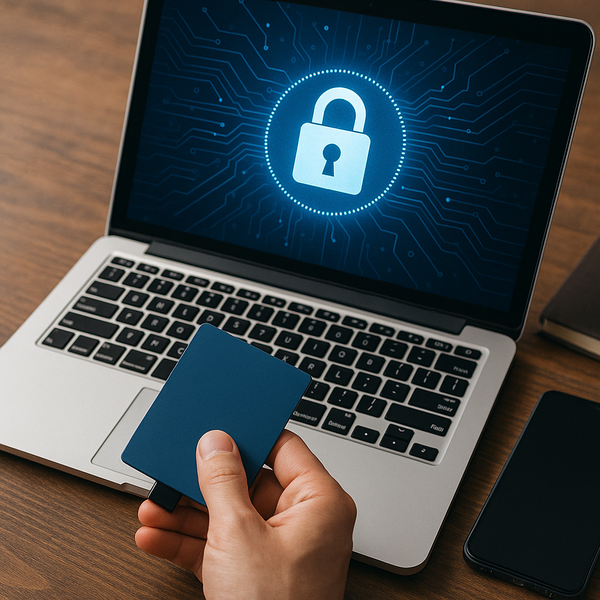
In today's interconnected world, the amount of personal and sensitive information stored digitally is immense. From banking details and personal photos to work documents and communication logs, our digital footprint is constantly expanding. Protecting this data from theft, loss, or unauthorized access is no longer just a technical concern; it's a fundamental aspect of maintaining privacy and security in daily life. Understanding the risks and implementing robust security measures is crucial for safeguarding your valuable information in an increasingly complex digital landscape.
Understanding the Threats to Your Data
Before you can effectively secure your data, it's important to understand the various threats lurking online and offline. Common threats include malware (viruses, ransomware, spyware) designed to steal data or disrupt systems, phishing attacks that trick you into revealing sensitive information, and brute-force attacks attempting to guess your passwords. Physical theft or loss of devices also poses a significant risk. Furthermore, data breaches at companies you interact with can expose your information, even if your own security is strong. Identity theft is a major concern stemming from compromised data.
Build a Strong Foundation: Passwords and Two-Factor Authentication
The first line of defense for most online accounts and devices is the password. Avoid using easily guessable information like birthdays or names. Instead, create long, complex passwords that combine uppercase and lowercase letters, numbers, and symbols. Each online service should have a unique password. Managing these can be challenging, which is where a reputable password manager application becomes invaluable. These tools securely store and generate strong passwords for you, requiring you to remember only one master password.
Layering your security with two-factor authentication (2FA) or multi-factor authentication (MFA) is a critical step. 2FA requires a second form of verification beyond just your password, such as a code sent to your phone, a fingerprint scan, or a token from an authenticator app. Even if a hacker cracks your password, they likely won't be able to access your account without this second factor. Enable 2FA on all supported services, especially email, banking, social media, and cloud storage.
Keep Your Software Updated
Software vulnerabilities are common entry points for cybercriminals. Software developers regularly release updates and patches to fix these security holes. It is absolutely vital to keep the operating systems on your computers, smartphones, and tablets updated, along with all installed applications, including web browsers, antivirus software, and other programs. Enable automatic updates whenever possible to ensure you have the latest security protections without delay. Ignoring update notifications leaves your devices exposed to known exploits.
Invest in Reliable Cybersecurity Software
Installing and maintaining comprehensive cybersecurity software is a cornerstone of data security. This typically includes antivirus software to detect and remove malicious programs, and often a firewall to monitor and control network traffic. Look for software suites that offer real-time scanning, phishing protection, and potentially even ransomware protection. Reputable antivirus programs are constantly updated to recognize new threats. Consider paid cybersecurity software options for more advanced features and better protection compared to free versions.
Secure Your Network Connection
When accessing the internet, securing your connection is crucial. At home, ensure your Wi-Fi network is protected with a strong, unique password (using WPA2 or WPA3 encryption) and consider changing the default router login credentials. Avoid using public Wi-Fi for sensitive transactions like online banking or shopping, as these networks are often unsecured and easily monitored by cybercriminals. If you must use public Wi-Fi, connect through a Virtual Private Network (VPN). A VPN encrypts your internet traffic, making it much harder for others on the same network to intercept your data. Explore different VPN providers and their subscription plans.
Backup Your Data Regularly
Protecting your data isn't just about preventing breaches; it's also about preparing for loss. Hardware failure, accidental deletion, or a ransomware attack can instantly erase your important files. Implement a regular data backup strategy. This could involve backing up to an external hard drive, using cloud backup services, or a combination of both. Cloud backup offers the advantage of offsite storage, protecting your data even if your physical location is compromised. Ensure your backups are recent and test restoring files periodically to confirm the backup process is working correctly. Compare online backup service costs and features.
Be Wary of Phishing and Social Engineering
Many data breaches begin with human error. Phishing emails, texts, or calls try to trick you into giving up personal information or clicking malicious links. Be skeptical of unsolicited communications, especially those asking for passwords, credit card numbers, or other sensitive data. Verify the sender's identity through a separate channel if unsure. Learn to recognize the signs of a phishing attempt, such as poor grammar, suspicious links, and urgent requests for information. Educate yourself on common social engineering tactics used by attackers.
Encrypt Sensitive Information
For highly sensitive files, consider using encryption. Encryption scrambles data so it can only be read by someone with the correct decryption key. Many operating systems offer built-in encryption for hard drives or specific folders. Cloud storage providers often offer encryption options as well. Encrypting data adds an extra layer of security, making it unreadable even if the storage device is stolen or the data is intercepted.
Physical Device Security
Don't overlook the physical security of your devices. Use screen locks on your smartphones and computers with strong PINs, passwords, or biometric authentication. Enable remote wipe features on mobile devices so you can erase your data if the device is lost or stolen. Be mindful of leaving devices unattended in public places.
Regularly Review and Update Your Security Practices
The threat landscape is constantly evolving, and so should your security practices. Periodically review your online accounts, delete ones you no longer use, and update your passwords. Check privacy settings on social media and other services. Stay informed about new security threats and data protection best practices. Consider using identity theft protection services for ongoing monitoring of your personal information online.

